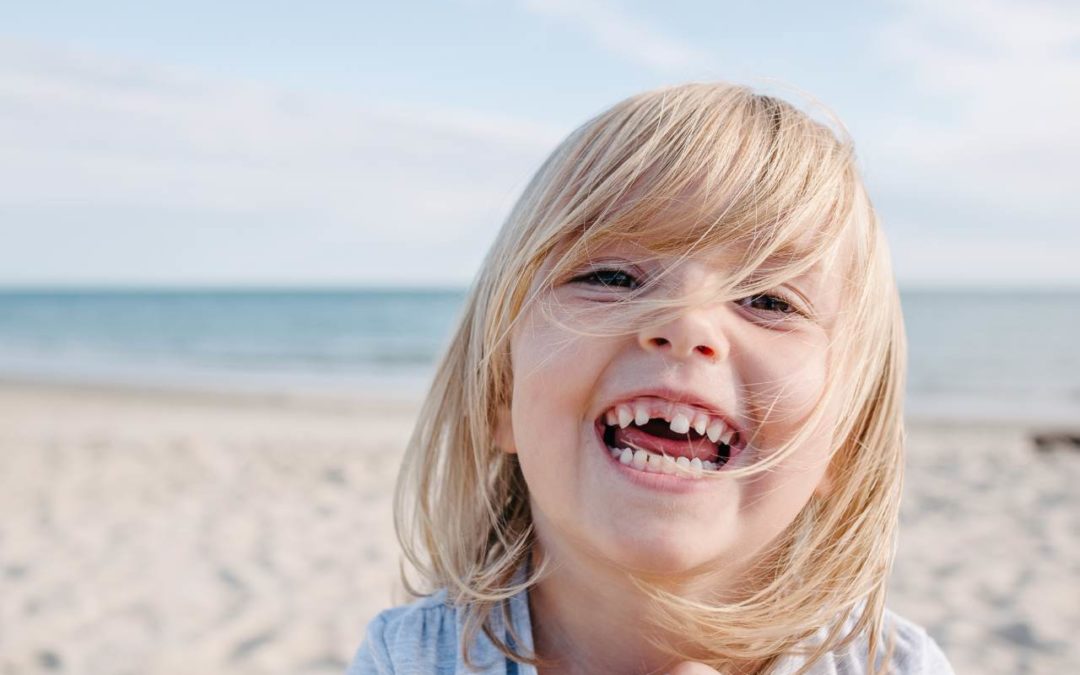Losing a tooth is definitely one a rite of passage that all children must pass through. Maybe your child has started asking questions about it. If they’ve a cousin, or a schoolmate, or neighborhood friend that has a gap where there once was a tooth; the questions can be numerous, insistent, and maybe anxious. Do you have answers to those questions? It happened so long ago for you and is such a natural part of life that odds are good you haven’t spent much time thinking about it, nor about the why or the when or the details of it. We are here to help!
When do Kids Lose Their Baby Teeth?
“When am I going to lose a tooth?” This is the question most asked by kids who become aware that their teeth will fall out. Whether your kid asks with excitement because it means a sign they are growing “bigger” or whether your kid asks with some trepidation or anxiety, you need an answer.
The age kids lose teeth varies. The answer obviously won’t give them an exact day, but you can tell them that it usually starts to happen between the ages of six years old and seven years old. Typically, the first tooth or teeth to come lose and then fall out are also the central incisors, which are the middle front on either the upper jaw or lower jaw. The lateral incisors usually fall out soon after between the ages of seven and eight.
Losing baby teeth is a process that happens over an extended period of time, think in terms of years. Consider if you will first, that their baby teeth didn’t all erupt at the same time, and so too is it the same with their permanent teeth. Those front teeth top and bottom erupt between six months and one year old and are adorable in their gummy smiles for a good while before the rest come in. The canine teeth, also called cuspids, start to poke through around 16 months. Between one and two years old their first molars erupt and then their second molars follow between the ages of two and three years old.
After the central and lateral incisors fall out, so follow the cuspids, and both sets of molars. But keep in mind, this all happens over an extended period of time, baby molars can remain until as late as 12 years old.
Follow this link to view a chart of baby teeth eruption, provided by the American Dentists Association (ADA).
Why Do Kids Lose Their Baby Teeth?
The short answer you can give your kid is that they lose their baby teeth because they are growing bigger and therefore need bigger teeth. Baby teeth serve the vital functions of enabling your baby/toddler learn to eat, learn to speak, and to hold their jaw in position for the permanent teeth.
Why Don’t Baby Teeth Have Roots?
After your child’s first baby tooth falls out, you may find yourself wondering “do baby teeth have roots?” Yes, they do have roots. The baby teeth roots are very different from the roots of the permanent molars that are strong and long and hardy to hold those teeth in place for the rest of your life. Conversely, baby teeth that need only remain in position for years, are smaller, thinner, and generally shorter.
Those baby teeth roots serve as guides to the permanent teeth developing in the jaw. When those permanent teeth begin to develop in accordance with the body’s internal clock, the baby teeth root actually begin the process of being reabsorbed into the body.
How Do Baby Teeth Come Loose?
The roots for baby teeth reabsorb as the permanent teeth beneath them are forming. The roots of a tooth are what hold it into place. So it makes sense then, that as the root of the tooth disappears via reabsorption, the tooth will become loose and wiggly.
How Long Does It Take for a Loose Tooth to Fall Out?
When a tooth becomes loose, it can take a few weeks up to a month to actually fall out. Some of that depends on how much wiggling your child chooses to do with it. The more wiggling, typically the sooner it will fall loose.
Should You Pull a Loose Baby Tooth?
Generally, we prefer to let baby teeth fall out when they are good and ready. As long as the gum around the tooth isn’t swollen and red, leave it alone. If the gum around the tooth is swollen and red, call us.
Does Dental Hygiene Change with a Loose Tooth?
Only that you or your child may be inclined to take extra care in being gentle when brushing that particular area. Dental hygiene continues to be important when your child has a loose tooth. It is important to brush and clean the tooth and the gum around it, two times a day for two minutes, and continue to floss once a day. We want the gums to be healthy when the loose tooth falls out, because it will have minimal bleeding, and having healthy gums for when the permanent tooth erupts is important.
The very first tooth to fall out is a rite of passage every single child experiences, and can be an interesting and fun couple of weeks to see the progression from simply feeling loose, to being wiggly, to being unreliable for chewing, and then finally to falling out. It’s such a clear marker to your kids that they are in fact growing bigger. Try to let them have fun with the wiggling, and be careful whatever promises you make even off-handedly about the tooth fairy!


Trackbacks/Pingbacks